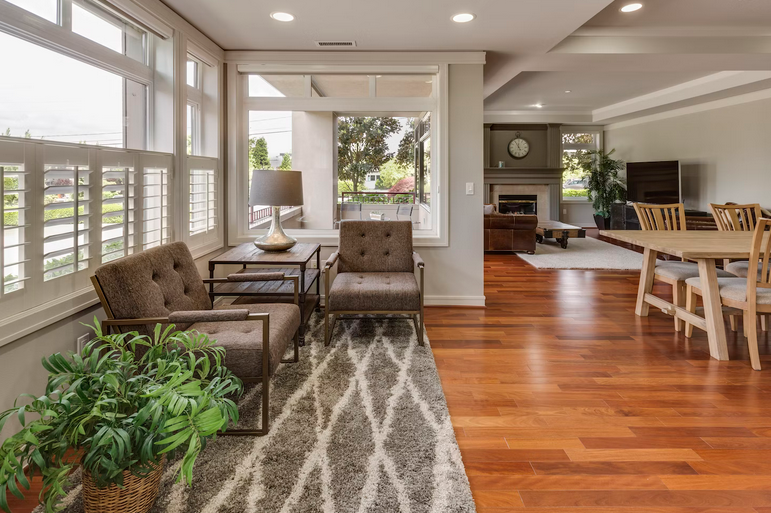We all know that open-concept floor plans have been the go-to design choice for years, promising a spacious and inviting atmosphere. But just like mentioned here at bau.de, as trends evolve, so do our preferences. Open floor plans are slowly falling out of favor, making way for more traditional layouts that prioritize privacy and functionality. But why exactly do people leave this trend? Here is the answer.
No Dedicated Rooms
In a traditional home layout, each room serves a specific purpose and provides privacy for its occupants. However, in an open floor plan, walls are torn down to create larger spaces that blend together. While this may seem like a great idea for promoting social interaction and creating a sense of spaciousness, it comes at the cost of individuality and functionality.
Without dedicated rooms, it becomes challenging to find a quiet space for focused work or relaxation. The absence of separate areas also poses difficulties when it comes to organizing household belongings or accommodating different activities simultaneously. Furthermore, without defined boundaries between living spaces, noise from one area easily travels throughout the entire house.
Not an Ideal Energy Efficient Option
 While they may offer a bright and airy feel, these expansive spaces often come at a cost when it comes to heating and cooling. With fewer walls to contain the air, temperature control becomes more challenging. During colder months, heat tends to escape quickly through the open layout, leading to higher energy bills as you keep maintaining a comfortable temperature throughout your home. Conversely, during hot summer days, cool air can easily dissipate into the vastness of an open floor plan, resulting in increased energy consumption for air conditioning.
While they may offer a bright and airy feel, these expansive spaces often come at a cost when it comes to heating and cooling. With fewer walls to contain the air, temperature control becomes more challenging. During colder months, heat tends to escape quickly through the open layout, leading to higher energy bills as you keep maintaining a comfortable temperature throughout your home. Conversely, during hot summer days, cool air can easily dissipate into the vastness of an open floor plan, resulting in increased energy consumption for air conditioning.
High Costs for Building and Maintenance
Constructing an open floor plan also requires a significant amount of structural work. Walls need to be removed or relocated, which can involve complex engineering and construction processes. This translates into higher labor costs as well as potential disruptions to existing electrical, plumbing, and HVAC systems. Furthermore, maintenance expenses tend to be higher in open spaces compared to traditional room setups. With fewer walls dividing different areas of the house, there’s a greater chance for wear and tear on surfaces like floors and walls. Additionally, noise control becomes more challenging without barriers to dampen sound transmission.
Goodbye to Privacy

Privacy is a precious commodity that seems to be fading away in the age of open floor plans. With walls and doors becoming obsolete, the concept of personal space is being challenged. Gone are the days when you could retreat to your room and have some time alone or engage in private conversations without fear of being overheard. In an open floor plan, there are no boundaries to separate different activities within a home. The lack of walls means that noise travels freely, making it difficult to find solitude or concentrate on tasks. Whether it’s trying to work from home or simply wanting some peace and quiet, privacy becomes a distant memory.
So, while open floor plans may have had their moment in the spotlight, it seems that they are slowly going out of style as people realize that functionality outweighs trendy design choices. As times change and priorities shift, we can expect new innovations in home design that strike a balance between openness and privacy – catering perfectly to our evolving needs.
